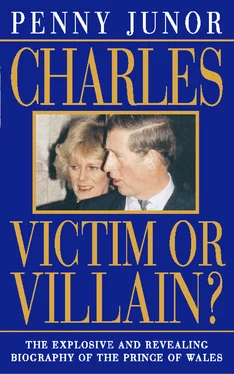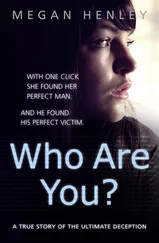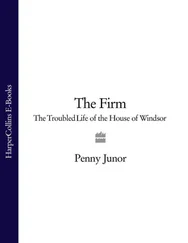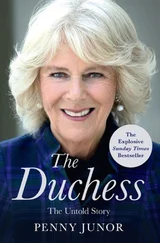Diana’s education was poor. After prep school at Riddlesworth Hall in Norfolk, she followed her sisters to West Heath, another boarding school in Kent, where she passed no O-Levels, despite two attempts, and left in December 1977 at the age of sixteen. She went from there to finishing school in Switzerland but didn’t enjoy it; she came home after six weeks and refused to go back. She did some brief nannying jobs, learnt to drive, did a short cookery course, and briefly worked as a student teacher at Betti Vacani’s children’s dancing school in Knightsbridge. But that too she gave up. One day she simply didn’t arrive for work, and when she was telephoned and asked what the problem was, she said she had hurt her leg. The truth was that whenever the going got tough, Diana quit. After that she did cleaning jobs for her sister and any friends who wanted their flats vacuuming or their laundry done. She had been obsessively clean and tidy ever since she was a small child. At school she had done far more washing than anyone else. It was the one thing she was prepared to stick at.
On 1 July 1979, her eighteenth birthday, Diana came into money which had been left in trust for the Spencer children by her American great-grandmother, Frances Work, and was encouraged by her mother, as her sisters had been before her, to buy a flat with some of the money. The flat she bought was 60 Coleherne Court, said to have cost £50,000, which she shared initially with two friends. By the time she began seeing the Prince of Wales, she had three flatmates, Carolyn Pride, Virginia Pitman and Anne Bolton; and was working three afternoons a week as an assistant at the Young England Kindergarten in Pimlico, run by the sister of a schoolfriend of Jane.
Diana’s problem was that she had had no discipline in her life. Like so many children of divorced parents, she had been indulged. She was an extremely rich, extremely spoilt young woman, who was used to getting her own way. In marrying the Prince of Wales she was taking on one of the most disciplined ways of life in Britain.
The Prince of Wales was quite besotted by Diana at the time he asked her to marry him, and when she came to Balmoral in the late summer of 1980 everyone fell in love with her. She was a fresh, delightful, funny girl, with a podgy face and pudding basin haircut, who told jokes, had no clothes so borrowed everyone else’s, asked daft questions, knew nothing about anything, and made everyone helpless with laughter. Charles couldn’t believe his luck, that this lovely girl, whom all his friends seemed to find so attractive and engaging, said she loved him .
Charles’s excitement at finding Diana, who seemed to be perfect in every way, was quite touching. In public, the mask behind which he hides is impenetrable. In private, he has never been able to hide his emotions, and since he was a small child, if asked, he has always blurted out everything he is thinking and feeling. He has no guile, and over the years most of these thoughts and emotions have been committed to paper in letters and notes to friends and relations. As his feelings for Diana began to run away with him, his older and wiser friends told him that he should slow down and keep his cool, lest he blow it.
In August 1980, several of Charles’s friends were with him on board the royal yacht Britannia for Cowes Week on the Isle of Wight, the oldest yachting regatta in the world and one of the great events of the social season. He invited Diana, and confided to one of his friends that he had met the girl he intended to marry. Oliver Everett, an assistant private secretary, who had accompanied her to the yacht, returned to his colleagues in the office saying, ‘I think this is serious.’ In September the Prince invited her to Balmoral, again with his friends. By then he was confessing that he was not yet in love with her, but felt that because she was so lovable and warm-hearted, he very soon could be. The friends could see no objection. At nineteen she was younger than most of them by many years, but she was friendly and easy company and most of them warmed to her. She was fun and bubbly, and told Charles how completely at home she was in the country. As one of his friends said, ‘We went walking together, we got hot, we got tired, she fell into a bog, she got covered in mud, laughed her head off, got puce in the face, hair glued to her forehead because it was pouring with rain … She was a sort of wonderful English school-girl who was game for anything, naturally young but sweet and clearly determined and enthusiastic about him, very much wanted him.’
The Prince taught Diana to fish on the River Dee, and it was while she was out alone with him one afternoon that she was spotted by James Whitaker, at that time royal correspondent of the Daily Star , who had been pursuing Charles for many years to secure the scoop of the decade – the girl who would be Queen – and his tenacity can only be marvelled at. It was a matter of hours before Diana’s name, address and pedigree were all over Fleet Street and her flat in Coleherne Court in Chelsea was under siege by seldom fewer than thirty photographers. They followed her every move, telephoned her at all hours of the day and night, pointed long lenses at her bedroom window from the building opposite, and made her life totally intolerable until the engagement was announced five months later and she was able to move into the sanctuary of Buckingham Palace.
Charles was badly smitten, but his decision to ask Diana to marry him in February was not born out of spontaneity or conviction. It was a pitiful combination of poor communication, media manipulation and pressure that he no longer had the strength to resist. Diana was clearly suitable and in every way might have been tailor made. She came from a family that had been connected to the Royal Family for years, she understood the protocol, she was comfortable around them all. She was sexy, pretty and fun to be with. She was interested in all the things he was interested in, and young enough to fit in with his lifestyle without too much difficulty. The newspapers loved Diana, and the country wanted him to marry her.
It was still early days, but because the media had reached fever pitch – not entirely discouraged by Diana, who developed quite a warm relationship with people like James Whitaker during that time – Charles was forced into making a decision that he was not yet ready to make. Everyone wanted him to find a wife. The pressure from inside and outside the family was intense, and there were not many candidates by the 1980s who fitted the job description. Diana seemed as close to perfect as he had known. She appeared to love him very much, so, hoping for the best, the Prince allowed himself to be led by others.
There was one other decisive factor. It was one of the most inexplicable episodes, which has remained a mystery ever since and probably always will. In November, a story appeared in the Sunday Mirror entitled ‘Love in the Sidings’, which claimed that a blonde woman of Diana’s description had driven from London in the middle of the night, and been secreted on to the royal train for a few hours with the Prince while it was parked at a siding in Wiltshire. She had been telephoned and asked for a comment and said the story was quite untrue. Bob Edwards, the editor, was so convinced it was true that he published anyway, and was shocked by the unprecedented reaction from the Queen’s press secretary, Michael Shea. He demanded a retraction, calling the story ‘total fabrication’. Some years later, Edwards had a Christmas card from his friend Woodrow Wyatt which simply said, ‘It must have been Camilla.’ Camilla and the Prince both say the incident never happened – Camilla has never been on board the royal train – and neither they, nor any of the Prince’s staff who were around at the time have ever been able to get to the bottom of where the story could possibly have come from. The royal train is heavily guarded by British Transport police – it is their big moment – and when it stops overnight, there are patrols walking up and down both sides of the train, men on bridges, cars everywhere, plus a large crew on board. It is inconceivable that anyone could have been smuggled on to the train undetected, and if someone had seen a blonde woman smuggled into the Prince’s compartment, whether Camilla or not, the story would have been out long ago.
Читать дальше












